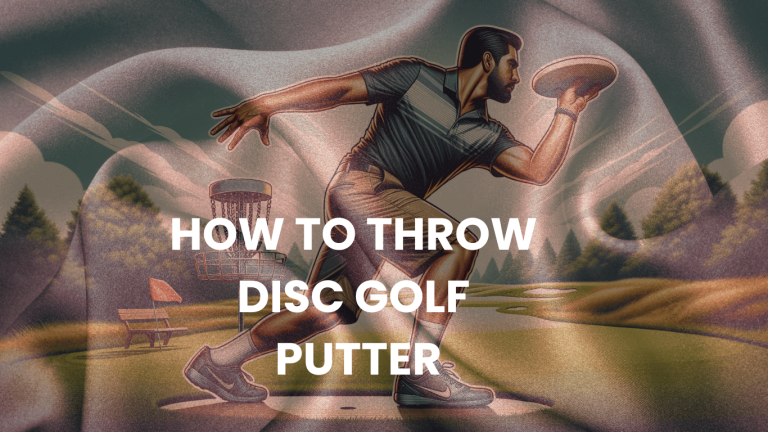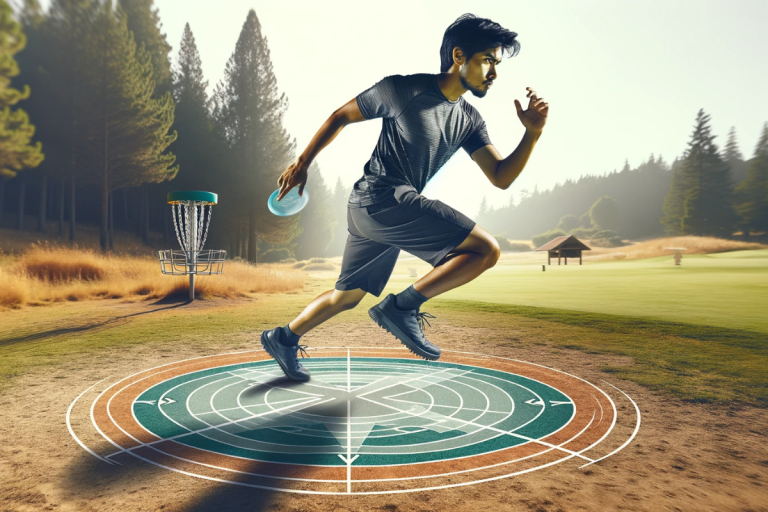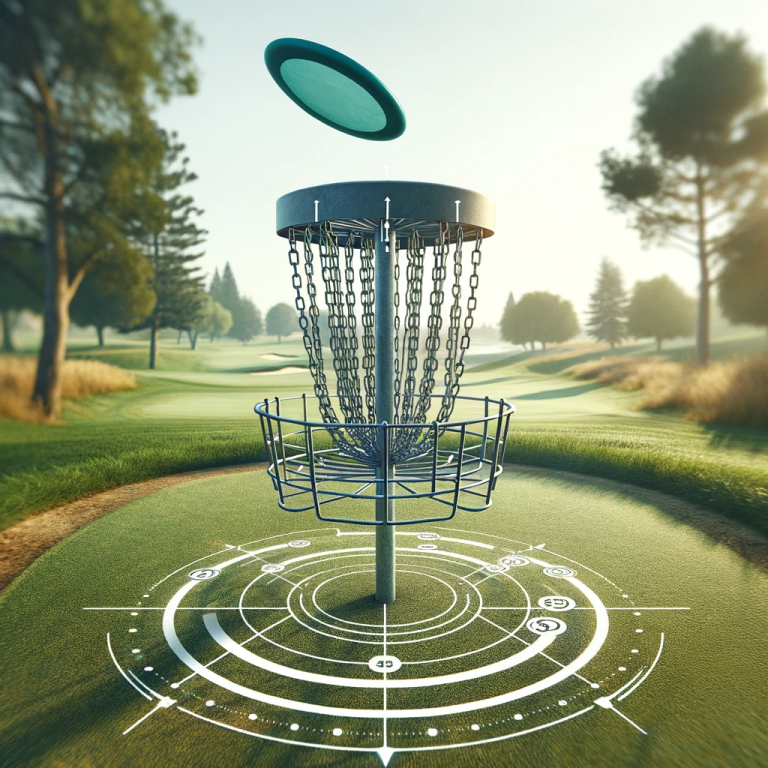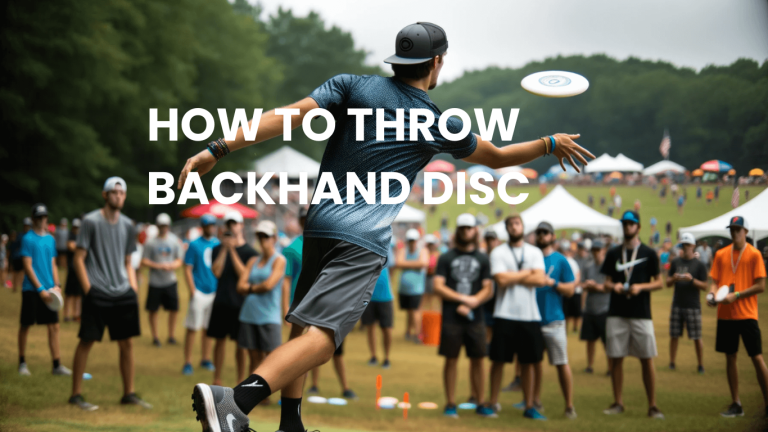Disc Golf Turn vs Fade|Understanding Turn vs. Fade for Better Throws
Disc Golf Turn vs Fade. Discovers the secrets of disc golf flight dynamics. Learn how turn and fade affect your throws. Your go-to guide for disc golf accuracy! When I first stepped onto the disc golf course, the terms “turn” and “fade” felt like a secret code I needed to crack. How much turn should I apply, and what about the fade? If you’ve had similar questions, you’re in the right place. In this guide, we’ll demystify the world of disc golf flight dynamics, focusing on two crucial factors: turn and fade.
Think of them as the Yin and Yang of your throws, and by the end, you’ll have the knowledge to improve your game and conquer the course. Let’s dive into this journey of flight, power, and precision.
Disc Golf Turn vs Fade
In the thrilling world of disc golf, mastering the nuances of flight dynamics is the key to becoming a formidable player. Two fundamental aspects, “turn” and “fade,” lie at the heart of every successful throw. Imagine them as the two sides of a coin, each contributing its unique magic to the disc’s journey through the air.
As you embark on this disc golf journey, understanding how turn and fade influence your throws will be your secret weapon. So, let’s unravel the mysteries of flight together, starting with the fascinating interplay of Disc Golf Turn vs. Fade.
Introduction
In the enthralling world of disc golf, where every throw is a thrilling challenge, understanding the flight characteristics of your discs is paramount. Disc golf is a dynamic sport where your success hinges on mastering the art of flight. Two critical aspects that define a disc’s journey through the air are “turn” and “fade.” These characteristics are akin to the magic wand in a disc golfer’s arsenal. In this section, we’ll delve deep into the realm of Disc Golf Flight Basics, with a primary focus on the intriguing concept of “Turn.” So, let’s embark on this flight path and unravel the mysteries of “Turn” in disc golf.
Disc Golf Flight Basics
Before we dive into the specifics of “Turn,” it’s essential to grasp the broader landscape of disc golf flight. Discs possess four primary flight ratings: Speed, Glide, Turn, and Fade. While all four ratings play a significant role, our journey today revolves around understanding the nuances of “Turn” and how it influences your disc golf game.
You May Also Like To See: Where Should Your Front Foot Go for a Disc Golf Drive?
Turn in Disc Golf
Now, let’s unravel the secrets of “Turn” in the context of disc golf. We’ll define this elusive term, explore how it impacts the initial direction of a disc, and even uncover its role in various disc golf shot types. Whether you’re curious about hyzer or anhyzer throws, understanding “Turn” is the key to unlocking precision and control in your disc golf game.
With our compass set to navigate the disc golf flight spectrum, let’s embark on this educational journey. As we delve into the concept of “Turn,” we’ll equip you with the knowledge to elevate your disc golf game to new heights. So, tighten your grip on that disc, and let’s explore the world of “Turn” in disc golf together.
Fade in Disc Golf
In the captivating world of disc golf, where precision and control are paramount, understanding the concept of “Fade” holds the key to mastering your throws. In this section, we’ll unravel the mysteries of “Fade” and its significance in the flight of a disc.
Definition and Explanation of “Fade” in Disc Golf
Fade, in disc golf parlance, refers to a disc’s tendency to veer off its initial flight path as it slows down towards the end of its journey. Think of it as the disc’s way of saying, “I’m gently fading to the left (for a right-handed backhand throw) or right (for a left-handed backhand throw) as I come to rest.” Understanding this dynamic is crucial for pinpoint accuracy in your throws.
How Fade Influences the Disc’s Ending Flight Path
Fade plays a pivotal role in determining where your disc ultimately lands. Whether you’re aiming for the heart of the fairway or angling for a tricky putt, comprehending how fade influences the ending flight path empowers you to make precise calculations, even in the heat of competition.
Examples of How Fade Affects Disc Golf Shots
To put the theory into practice, we’ll delve into real-life scenarios where fade becomes the guiding force in disc golf shots. From navigating dense foliage to making those breathtaking long-range putts, we’ll explore how mastering fade can be the game-changer you’ve been seeking.
Turn vs. Fade: The Battle
Now that we’ve demystified the essence of “Fade,” it’s time to explore its intriguing counterpart, “Turn.” Join us in the next section as we dive into the dynamic interplay between these two flight characteristics. Discover how your choice of disc and your skill as a player influence the delicate balance between turn and fade, all while drawing inspiration from the techniques of professional disc golfers.
You May Also Like To See: How to Control Distance in Disc Golf?
As our journey through the world of disc golf flight continues, you’ll gain insights, tips, and practical advice that will elevate your game to new heights. So, tighten your grip on that disc, and let’s uncover the secrets of fade and turn together.
Practical Tips for Players
In the final leg of our disc golf flight adventure, we’ll provide you with valuable insights and advice. Learn how to choose the right discs based on their turn and fade ratings, allowing you to tailor your arsenal for various shot scenarios. Discover techniques to adjust your throws to harness the power of turn and fade, and dive into drills and exercises that will sharpen your control over these critical flight characteristics.
Join us on this educational journey as we equip you with the knowledge and skills to conquer the dynamic world of disc golf. Whether you’re a novice or a seasoned pro, these practical tips will undoubtedly enhance your game.
With “Fade” and “Turn” now deciphered, and practical wisdom in your grasp, you’re well on your way to becoming a disc golf maestro. So, let’s embark on this exciting voyage of discovery together!
Conclusion
As we wrap up this enlightening journey through the dynamics of “turn” and “fade” in disc golf, it’s time to distill the key takeaways. Understanding these flight characteristics is essential for anyone looking to elevate their game. By grasping the interplay between turn and fade, you gain a powerful tool in your disc golf arsenal.
FAQs
Q1: What is the difference between disc golf turn and fade?
Answer:
Disc golf turn relates to the initial direction of a disc, while fade impacts its ending flight path.
Q2: How do disc choice and player skill affect the turn-fade balance?
Answer:
Disc choice and player skill can influence the interplay between turn and fade, affecting shot outcomes.
Q3: Can you provide examples of how professional disc golfers use turn and fade in their throws?
Answer:
Professional disc golfers employ turn and fade to shape their shots, achieving precise outcomes on the course.







